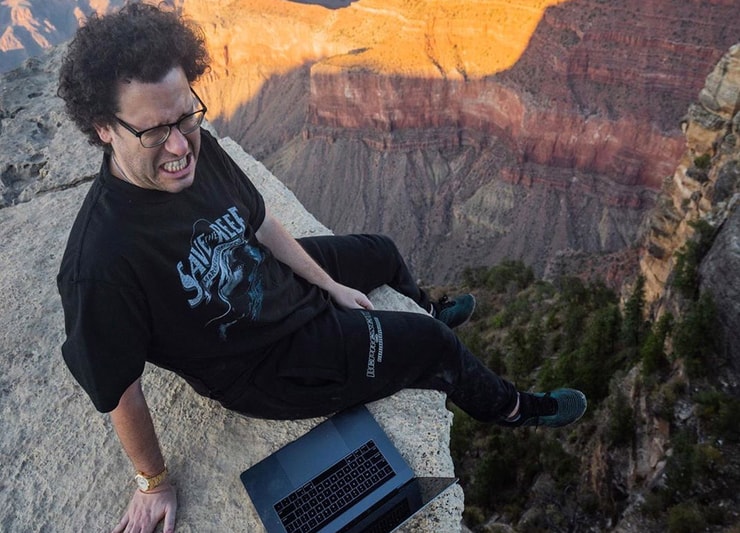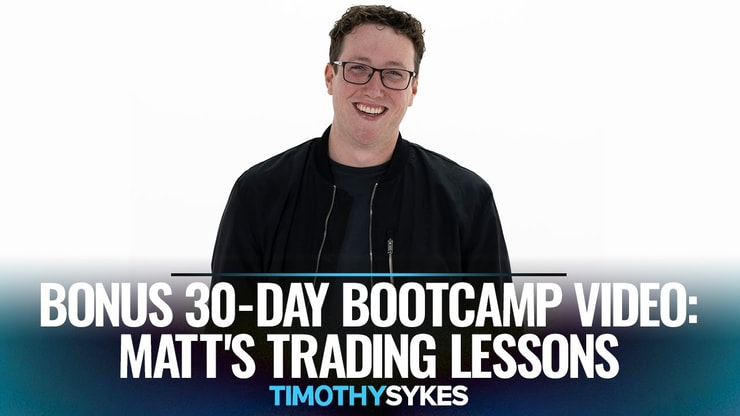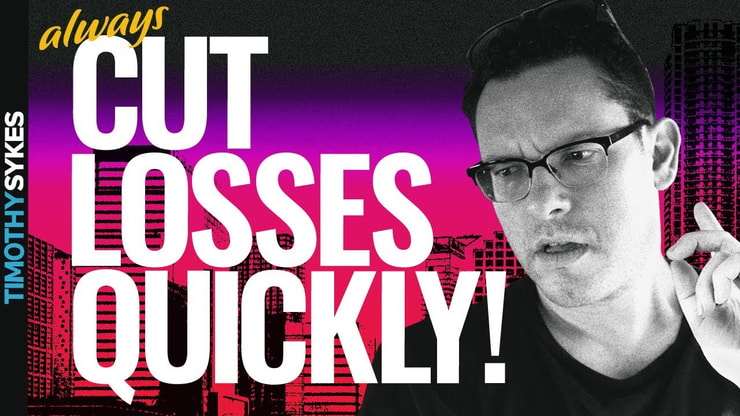Here’s something traders just don’t discuss enough in trading: position sizing.
What comes to mind when you think of the stock market? Maybe it’s the Wall Street Bull, a big-name investor, or your favorite chart pattern.
Me? I think of momentum penny stocks. A lot of big Wall Street traders balk at these stocks. Let them. I’ve been trading them for 20+ years and have made over $7 million in trading profits.* Now I teach my strategies in my Trading Challenge. And I have multiple six- and seven-figure students.*
Yes, trading penny stocks can be risky … But position sizing is the first step in risk management. If you can master position sizing, you can improve trading.
In this post, I’ll cover what to consider before deciding on a position size and how you can use position sizing to reduce risk. I’ll even share some techniques and strategies to use when you’re figuring out how big a position you want to take.
Table of Contents
- 1 What Is Position Sizing?
- 2 Understanding the Importance of Position Sizing for Day Trading
- 3 How Do You Determine Your Position Size?
- 4 Position Sizing in Intraday Trading
- 5 What Is the Optimal Position Size?
- 6 Position Sizing Techniques: 3 Top Strategies
- 7 Alternative Position Sizing Techniques
- 8 How to Calculate Position Sizing on Excel
- 9 Frequently Asked Questions About Position Sizing
- 10 Position Sizing: The Conclusion
What Is Position Sizing?
Position sizing is a big deal for traders. It’s part of risk management.
It’s the number of shares or the dollar amount that a trader buys or short sells.
I teach new traders to start small. Sizing up too quickly is a good way to blow up a trading account. It’s not easy to come back from a hit like that.
Understanding the Importance of Position Sizing for Day Trading
Don’t put all your eggs in one basket … Diversify your trades so you don’t lose all your capital in one trade.
Position sizing lets you put your eggs in different baskets. If one trade goes bad, it won’t hurt your entire account.
Taking the right position size can save your trading account. Never underestimate its importance!
How Do You Determine Your Position Size?

2025 Millionaire Media, LLCYour position size depends on the size of your account, your risk tolerance, and your experience level. Here’s how it works…
First, how big is your brokerage account? If you have $3,000, you won’t be able to buy a $5,000 position without using leverage. Don’t use leverage. It can come back to bite you, even if it works out in the beginning.
Next, how much are you willing to lose? If you’re only willing to risk losing 1% of your capital on a trade, you’d better not put all your money into that trade. Some traders, like my first female student to hit the $1 million milestone, Mariana, start with tiny positions.* Think 10–20 shares.
That was smart of Mariana. It allowed her to focus on the process without worrying about blowing up her trading account.
Are you a newer trader? Is this a pattern you haven’t seen before? Don’t take big risks with your hard-earned cash. Only size up when you feel comfortable. Sizing up too quickly is one of the most common mistakes I see.
Want to speed up your learning? Check out my 30-Day Bootcamp. It takes you from basics to patterns and beyond in just 30 days.
Here’s a quick example of position sizing…
Practical Example of Position Sizing
Say your account has $10,000 in it.
You only want to risk 1% of your account on every trade. That means you risk $100 per trade.
So if you’re looking at a $10 stock, you could buy 100 shares with $1,000 and set a stop loss at $9. Then if the stock hit your stop loss, you’d lose $100 — your set risk.
If you have a higher risk tolerance and feel more comfortable with the pattern, you can always increase your position size.
Position Sizing in Intraday Trading
Intraday trading is buying and selling shares within a trading day. When you’re day trading, it’s crucial to go into every trade with a plan. And that includes having a solid position size.
There isn’t a special technique for position sizing when day trading, but you need to be extra careful because of the volatility in intraday trading.
The momentum penny stocks I day trade can move as much as 50% in a matter of minutes. You don’t want to be on the wrong side of a move like that … So you must have the right position size and cut losses quickly whenever a stock goes against your plan.
Cutting losses quickly is rule #1. I have other rules that can help you navigate the markets and find plays that fit your strategies. Learn my rules and take your trading to the next level — apply for my Trading Challenge today!
What Is the Optimal Position Size?
I can’t tell you what the optimal position size is for you … You’ll have to do your due diligence and find what works best. What I do know is that many of my top students started with small accounts and small positions to nail their processes. It can take years.
The techniques below can help you figure it out. Remember to keep in mind your account size, risk tolerance, and experience.
How Can You Reduce Risk With Optimal Position Size?
Position sizing can help you protect your account by not risking too much capital on one trade. So if you find the optimal position size, you’ll be managing the risk before you even enter the trade.
Check out “The Complete Penny Stock Course,” written by my student Jamil. He covers position sizing and other risk management strategies. And he gets into the basics of day trading, the psychology behind trading, and SO many other topics beginners need to know.
It blows my mind that more people haven’t read it. Read it three or four times. Keep it by your trading setup!
Position Sizing Techniques: 3 Top Strategies
These three position sizing techniques can be a good starting point for calculating the size of a trade. Remember, it’s all about risk management while maximizing potential gains.
More Breaking News
- QuantumScape’s Stunning Stock Surge: What’s Next?
- Hinge Health Inc.: Market Positioning Analysis
- Quantum Leap for Rigetti: Time to Buy?
1. Equal Dollar Amount Approach
The idea here is that you put the same dollar value into every trade. So you’d buy more shares of a stock trading at a lower price.
I think this approach can be good for beginning traders with small accounts. It’s a simple technique that can help you gain valuable market experience.
2. Kelly Criterion
John Kelly, a scientist at Bell Labs in the 1950s, designed this strategy for long-distance telephone noise issues. Gamblers picked up on it and started using it to optimize their bets. It’s now one of the most common money management techniques.
In trading, the Kelly formula uses the win probability of the trade and the win/loss ratio of your past trades.
The winning probability (W) is calculated by assessing your last 50–60 trades and dividing that number by the total number of trades. Anything over 0.5 is good, but the closer it is to 1, the better.
The win/loss ratio (R) is calculated by dividing the average win of the positive trades by the average loss of the negative trades.
You plug those values into the Kelly percentage formula: K%= W – W/R. The value will be a percentage. It represents the position size you should take. So if it comes out to 10%, you’d use 10% of your capital for each trade.
It may be popular with some, but I say go with what works for you. If that’s a fixed dollar amount or percentage, so be it.
3. Fixed Risk
Here you set a dollar amount you’ll put into each trade.
This approach can be flexible. You know exactly how much you’re risking. You might use it if you’re testing the waters with a new trading pattern. You can size up and cut losses if the stock goes against you.
Alternative Position Sizing Techniques

2025 Millionaire Media, LLC1. Volatility-Based Position
This technique hinges solely on volatility. If a stock’s volatile, your position size goes down. If it’s less volatile, your position size goes up.
It’s smart to be cautious with volatile stocks … But I don’t like the idea of sizing down too much, because volatile stocks are the ones with the most potential. I love volatility. Grab your copy of my no-cost “Volatility Survival Guide” to learn why.
2. Equal Position Approach
This is a twist on the equal dollar amount approach. You buy the same number of shares instead of the same dollar amount. So you’d put more money into a more expensive stock.
Some seasoned day traders prefer this because they like knowing exactly how many shares they have on every trade. Some may set up hotkeys so they can buy a predetermined number of shares at the click of a button.
I don’t recommend it for beginners. It doesn’t account for a trade’s dollar value.
Bonus Tip: How You Can Determine Position Sizing When Forex Trading
I don’t trade forex. But position sizing guidelines for forex trading are the same as those for stocks. You look at currency pair exchange rates instead of stock price action.
You still need to consider your account balance, what you’re willing to risk, and your experience level. Next, you look at the currency pair you’re trading and the exchange rates for the two currencies.
No matter what you’re trading, you need a solid position size that’ll protect your account and help maximize potential returns.
How to Calculate Position Sizing on Excel
Here’s a quick formula you can use to calculate position size on Excel:
Position size = $ Account risk / $ Trading risk
Account risk is the amount you’re willing to lose. So if you have a $10,000 account and risk 2%, the account risk will be $200.
Trade risk is the difference between your purchase and stop loss. So if you buy a stock at $5 and your stop loss is $4.80, the trade risk is 20 cents.
For this example, the position size would be $200 / $0.20, which is 1,000 shares. You can adapt this equation to fit your comfort level and risk tolerance.
Frequently Asked Questions About Position Sizing
What Does Full Position Mean?
A full position is the amount you want to put into a stock based on your funds and risk tolerance. If you were to put $5,000 into a trade and then add another $5,000 later on, your full position would be $10,000. The first $5,000 is considered a partial position.
What Lot Size Should I Use?
A micro lot is 1,000 currency units, a mini lot is 10,000 currency units, and a standard lot is 100,000 currency units. Micro lots are the minimum allowed by most brokerages and can be a good starting point for beginners who are still learning the process. Once you feel more comfortable, you can use a bigger lot.
How Do You Calculate Gold Lot Size?
It depends on your broker. They might use standard lot size calculations, or they might use the number of ounces. If they use ounces, and you want to trade 0.30 lots of gold, you can do 0.30 x 100 = 30 lots of gold.
Position Sizing: The Conclusion

2025 Millionaire Media, LLCPosition sizing plays a huge role in your trading journey.
You have to factor in your account size, risk tolerance, and experience level when deciding on a position size. And you must build a process that works for you.
Finding the right position size can be hard. If you’re dedicated to learning techniques that can help you be a better trader, apply for my Trading Challenge. But be ready to put in the work.
What are your thoughts? What position size do you use? Let me know in the comments…
Disclaimers
*Please note that reported trading results are not typical. Most traders lose money. It takes years of dedication, hard work, and discipline to learn how to trade. Individual results will vary. Trading is inherently risky. Before making any trades, remember to do your due diligence and never risk more than you can afford to lose.
While Tim Sykes has enjoyed remarkable success trading stocks over the years, earning an aggregate sum of over $7 million in trading profits between 1999 and 2021, his primary income derives from the sale of financial education products and subscription services offered by various businesses and websites in which he has an ownership stake.
This level of successful trading is not typical and does not reflect the experience of the majority of individuals using the services and products offered on this website. From January 1, 2020, to December 31, 2020, typical users of the products and services offered by this website reported earning, on average, an estimated $49.91 in profit. This figure is taken from tracking user accounts on Profit.ly, a trading community platform. Timothy Sykes has a minority shareholder interest in the platform. The typical success rate of users was based on the following methodology:
- From January 1, 2020, to December 31, 2020, 849,078 trades were uploaded to Profit.ly. 633,891 trades were “verified” (corroborated with trade account data).
- Instructor trades are ignored.
- Average P&L / trades is obtained by calculating total P&L and dividing by the total number of trades
- Average trades per account is obtained by counting the total number of trades and dividing by the number of accounts (mean function)














Leave a reply